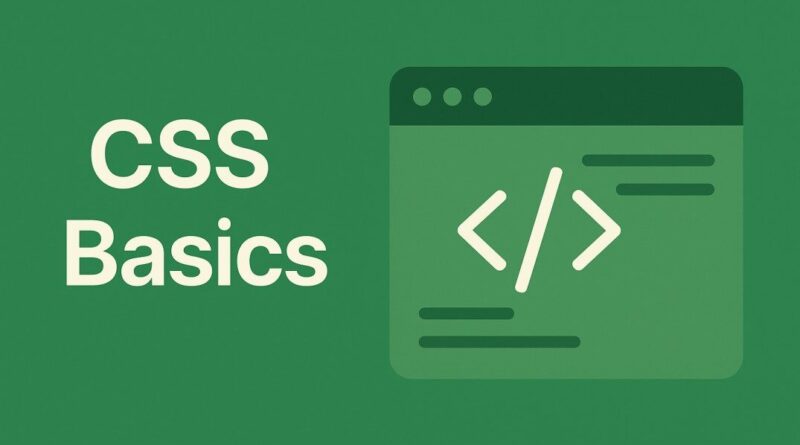CSS – Unlocking Web Style: Your First Steps into CSS Syntax!
Unlocking Web Style: Your First Steps into CSS Syntax!
Ever wondered how websites go from plain text to vibrant, engaging experiences? The secret often lies in something called CSS – Cascading Style Sheets. It’s the magic wand that adds color, changes fonts, arranges layouts, and so much more!
If you’re just starting your journey into web development, understanding CSS is a monumental step. And the very first thing we need to grasp is its fundamental language: CSS Syntax. Don’t worry, it’s simpler than you might think! Let’s break down the absolute basics, piece by piece, so you can start styling with confidence.
The Building Block: The CSS Ruleset
Imagine you want to tell your web page, “Hey, all paragraphs should be blue!” How do you communicate that with CSS? You use something called a ruleset.
A ruleset is like a complete instruction for styling a specific part of your webpage. Every CSS ruleset has two main parts:
- The Selector: This is how you pick which HTML element you want to style. Think of it as pointing your finger at exactly what you want to change.
- Want to style all paragraphs? Your selector would be
p. - Want to style all headings of type 1? Your selector would be
h1.
- Want to style all paragraphs? Your selector would be
- The Declaration Block: This is where you actually list out all the styles you want to apply to the selected element. It’s enclosed within curly braces
{}. Everything inside these braces applies to the element you’ve selected.
So, combining these, a basic ruleset looks like this:
CSS
selector {
/* This is where your styles go! */
}
Easy, right? You’re already understanding the core structure!
Giving Instructions: Declarations (Property-Value Pairs)
Inside that declaration block (those curly braces), you put your actual styling instructions. These instructions are called declarations, and they always come in pairs: a property and a value.
- Property: This is what you want to change (e.g.,
color,font-size,margin). - Value: This is how you want to change it (e.g.,
blue,16px,20px).
Every property and its value are separated by a colon :.
Let’s go back to our blue paragraph example:
CSS
p {
color: blue; /* This is a declaration! */
}
Here:
coloris the property (we want to change the text color).blueis the value (we want it to be blue).
You can add as many declarations as you need within a single declaration block! Just make sure to separate each declaration with a semicolon ;. This semicolon tells the browser, “Okay, that instruction is finished; now for the next one!”
Take a look at this example:
CSS
h1 {
color: green; /* First declaration */
font-size: 36px; /* Second declaration */
text-align: center; /* Third declaration */
}
Without the semicolons, CSS gets confused about where one instruction ends and the next begins. They are super important!
Making Notes: CSS Comments
Just like making notes in a notebook, sometimes you’ll want to add explanations or reminders within your CSS code. This is where CSS comments come in handy. They are completely ignored by the browser, so they don’t affect how your styles look.
To create a comment, you start with /* and end with */. Anything between these two symbols is a comment.
CSS
/* This is a single-line comment */
p {
color: blue; /* This comment explains the color */
}
/*
This is a
multi-line
comment
*/
Comments are fantastic for:
- Explaining complex parts of your code.
- Temporarily disabling a style without deleting it.
- Helping other developers (or your future self!) understand your code.
Putting It All Together: A Simple Example
Let’s see everything we’ve learned in one small CSS snippet:
CSS
/* My First CSS Stylesheet */
body { /* Selector for the entire page body */
font-family: Arial, sans-serif; /* Sets the default font */
margin: 20px; /* Adds some space around the content */
}
h2 { /* Selector for all h2 headings */
color: #336699; /* Sets a nice blue-ish color */
border-bottom: 1px solid #ccc; /* Adds a subtle border at the bottom */
padding-bottom: 5px; /* Adds space between text and border */
}
.highlight { /* A class selector for elements with the class "highlight" */
background-color: yellow; /* Makes the background yellow */
font-weight: bold; /* Makes the text bold */
}
In this example, we see:
- Different selectors (
body,h2,.highlight). - Declaration blocks enclosed in
{}. - Numerous declarations with
property: value;pairs. - Crucial semicolons after each declaration.
- Helpful comments explaining the code.
Your Journey Begins Now!
Congratulations! You’ve just grasped the absolute fundamentals of CSS syntax. This might seem like a small step, but it’s the bedrock upon which all amazing web designs are built. With this knowledge, you can start experimenting, changing colors, and seeing the immediate impact of your code.
Keep practicing, keep exploring, and soon you’ll be weaving intricate and beautiful designs with CSS! What’s the first thing you’re excited to style on your webpage? Share your thoughts in the comments below!



